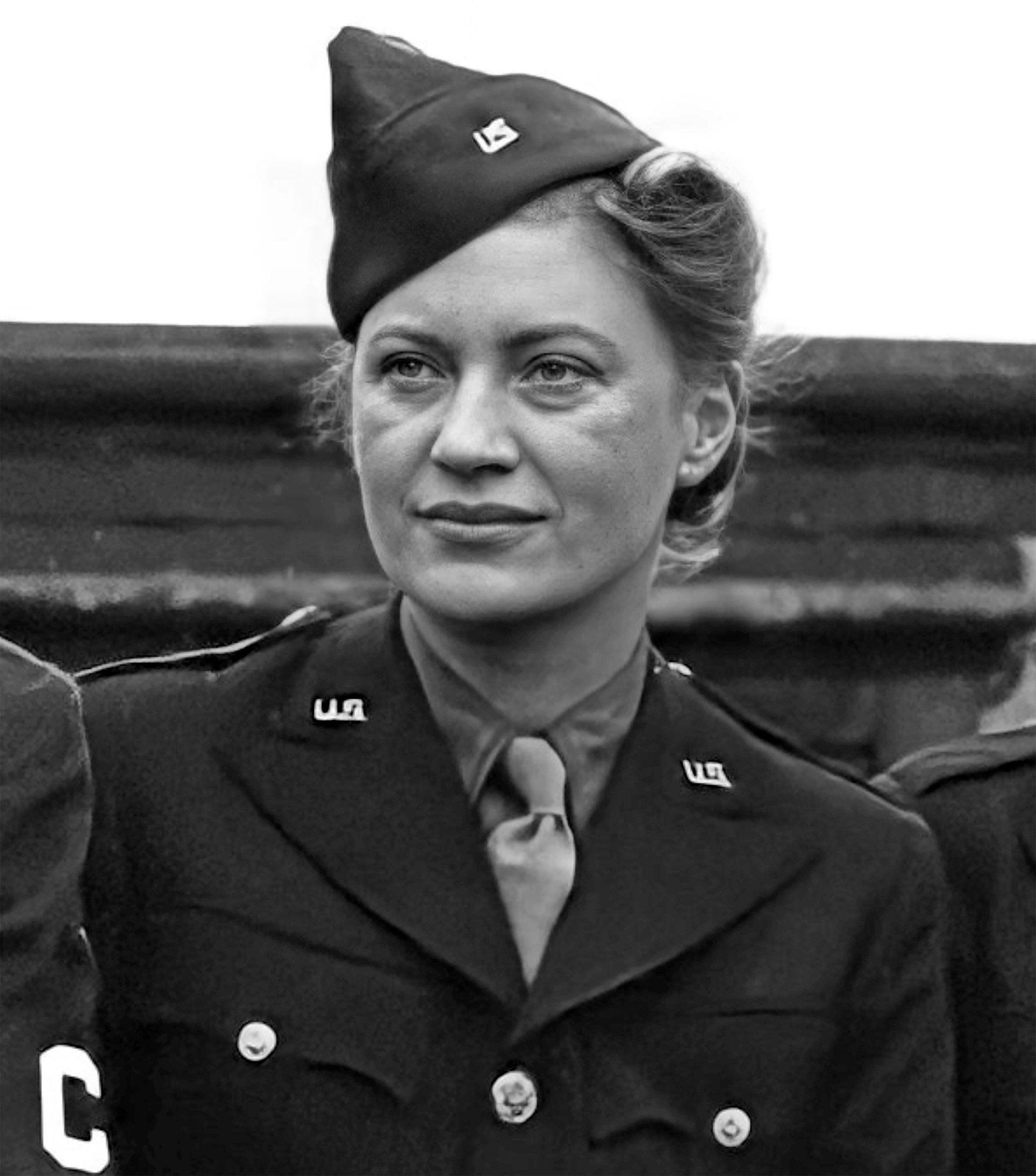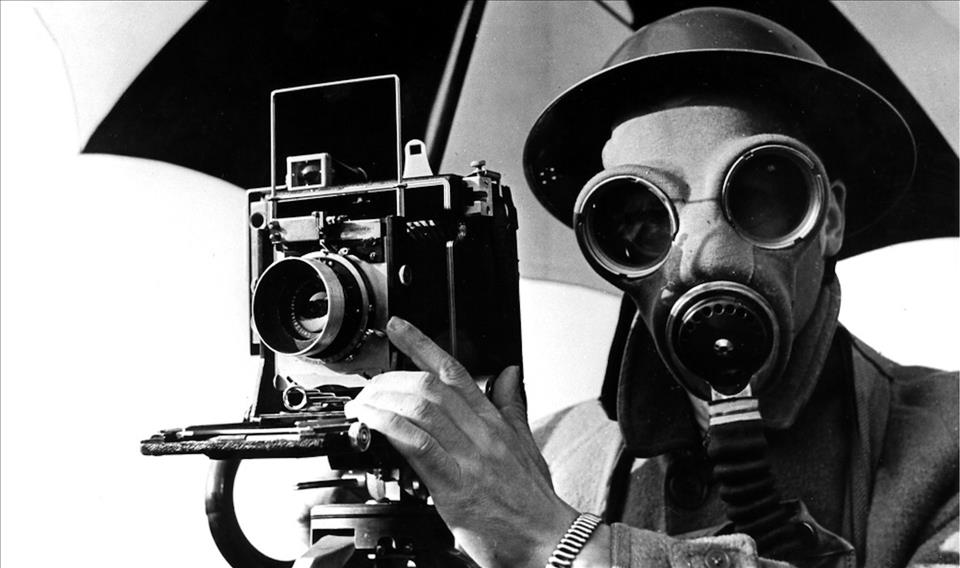
Lee Miller Retrospective Confirms Her As One Of The Most Important Photographers Of The 20Th Century
Curated mostly in chronological order, the exhibition steers viewers through a series of gallery spaces each documenting a key era in Miller's multi-faceted career , from Vogue model to surrealist muse, fashion photographer to war correspondent, and finally to hostess and cordon bleu cook.

Miller in 1943. Pictorial Press / Alamy
Tate's exhibition is certainly not the first UK retrospective of Miller's work, but it is arguably the most large-scale show since The Art of Lee Miller at the V&A in 2007. This new exhibition tells Miller's complex story through approximately 250 modern and vintage prints, film and selected original publications.
Beginning at the height of the jazz age in fashionable New York, we first encounter a striking photomaton self-portrait of Miller taken around 1927. Here, at 19, she became one of the first supermodels, posing for the likes of celebrated fashion photographers Edward Steichen and George Hoyningen-Huene .
With a letter of introduction from Steichen, she entered the exciting and hedonistic world of 1920s Paris. Here she apprenticed herself to surrealist artist Man Ray and rubbed creative shoulders with artists, writers and intellectuals, many of whom appear in the exhibition in portraits taken by Miller.
A screening of Jean Cocteau's 1930 film The Blood of the Poet (Le sang d'un poète) shows Miller in her only film role as a statue that comes to life, placing her directly within the Parisian avant garde.
In another short, newly restored and rarely seen experimental film, Miller and Man Ray are seen filming each other with a handheld camera revealing a playful intimacy in their relationship as Man Ray blows bubbles from a clay pipe while Miller giggles as she caresses a phallic sculpture by Romanian artist Constantin Brancusi .
Many photographs in this exhibition are very familiar having been widely reproduced – from the torn curtain exposing a desert landscape (Portrait of Space, Al Bulyaweb, near Siwa, Egypt, 1937), to the portrait of Miller defiantly washing off the dirt from Dachau in Hitler's bath, to the surreal and occasionally humorous portraits of a devastated London captured during the blitz.
However, there are several previously unseen photographs printed from Miller's original negatives or borrowed from the archives of other creatives. Two examples include a portrait of Miller's friend and fellow artist Eileen Agar with one of her sculptures (Eileen Agar, London, 1937), and the wonderfully disorientating shot of the Helwan Cement Factory taken in Cairo in 1936, demonstrating Miller's innovative modernist sensibility.
Miller's war photographs are, by their very nature, difficult viewing. Sensitively curated by Hilary Floe in consultation with Dr Andy Pearce at the UCL Centre for Holocaust Education, scenes from the concentration camps are a dramatic change in tone from the humour and pun of her Egyptian and blitz images.
In razor-sharp contrast, Miller's photographs from Buchenwald and Dachau are like a sucker punch to the stomach – hard-hitting and painful to absorb. There was a noticeable silence in the gallery as cameras and phones were lowered, Miller's photographs inviting us to reflect and question our own humanity.
“I usually don't take pictures of horrors,” Miller wrote to Audrey Withers, editor of British Vogue.“But don't think that every town and every area isn't rich with them. I hope Vogue will feel that they can publish these pictures.” Many of them were published, transforming the fashion and lifestyle magazine into an important platform for reporting the war in Europe – particularly to the magazine's American readership.
Miller combined her experience of the fashion world with her war photography, later persuading Vogue to publish harrowing photographs she had taken in concentration camps. Lee Miller Archives
Miller's photographs of refugees and children in the immediate aftermath of the war are some of her more poignant images: the haunting gaze of two children waiting for gruel soup; opera singer Irmgard Seefried singing an aria from Madam Butterfly among the ruins of the Vienna Opera House; and an old woman scavenging for scraps in the“Field of Blood” park in Vérmezõ, Budapest.
The final gallery space concludes the exhibition with a selection portraits of Miller's friends, many taken for her final Vogue photo-essay Working Guests (1953), transporting us from the devastation of post-war Europe to the more peaceful setting of Farley Farm in East Sussex (now home to the Lee Miller Archives ).
Here, Miller lived with her second husband Roland Penrose , whom she married in 1946, and her son Antony, born in 1947. Suffering from what would today be diagnosed as PTSD, and struggling with severe bouts of depression and alcoholism, Miller took on her final role. Replacing the darkroom with the kitchen she became a hostess and an established cook – a more ordinary end to an extraordinary life.
Lee Miller is showing at Tate Britain in London till 15 February 2026.
Looking for something good? Cut through the noise with a carefully curated selection of the latest releases, live events and exhibitions, straight to your inbox every fortnight, on Fridays. Sign up here .

Legal Disclaimer:
MENAFN provides the
information “as is” without warranty of any kind. We do not accept
any responsibility or liability for the accuracy, content, images,
videos, licenses, completeness, legality, or reliability of the information
contained in this article. If you have any complaints or copyright
issues related to this article, kindly contact the provider above.


















Comments
No comment